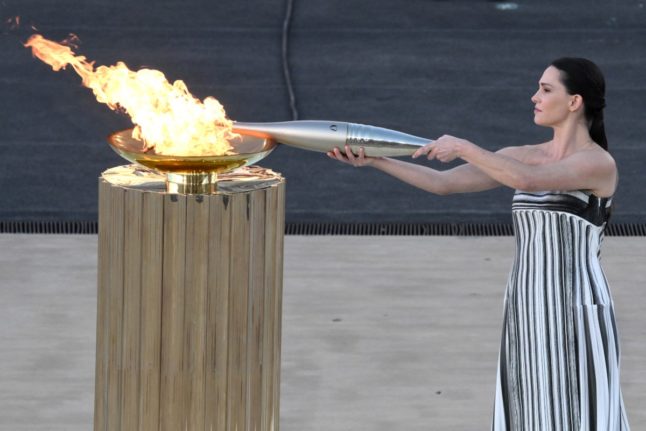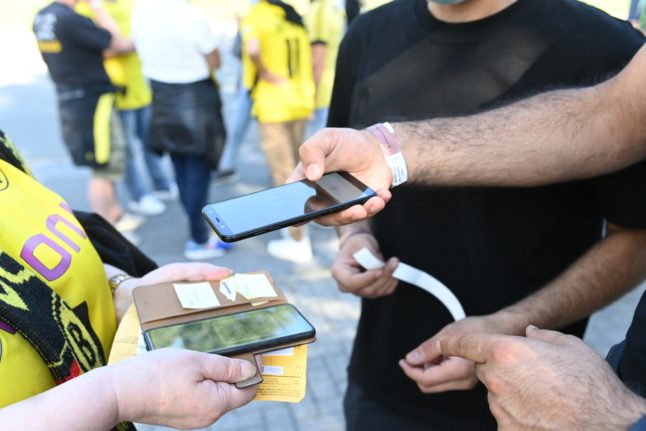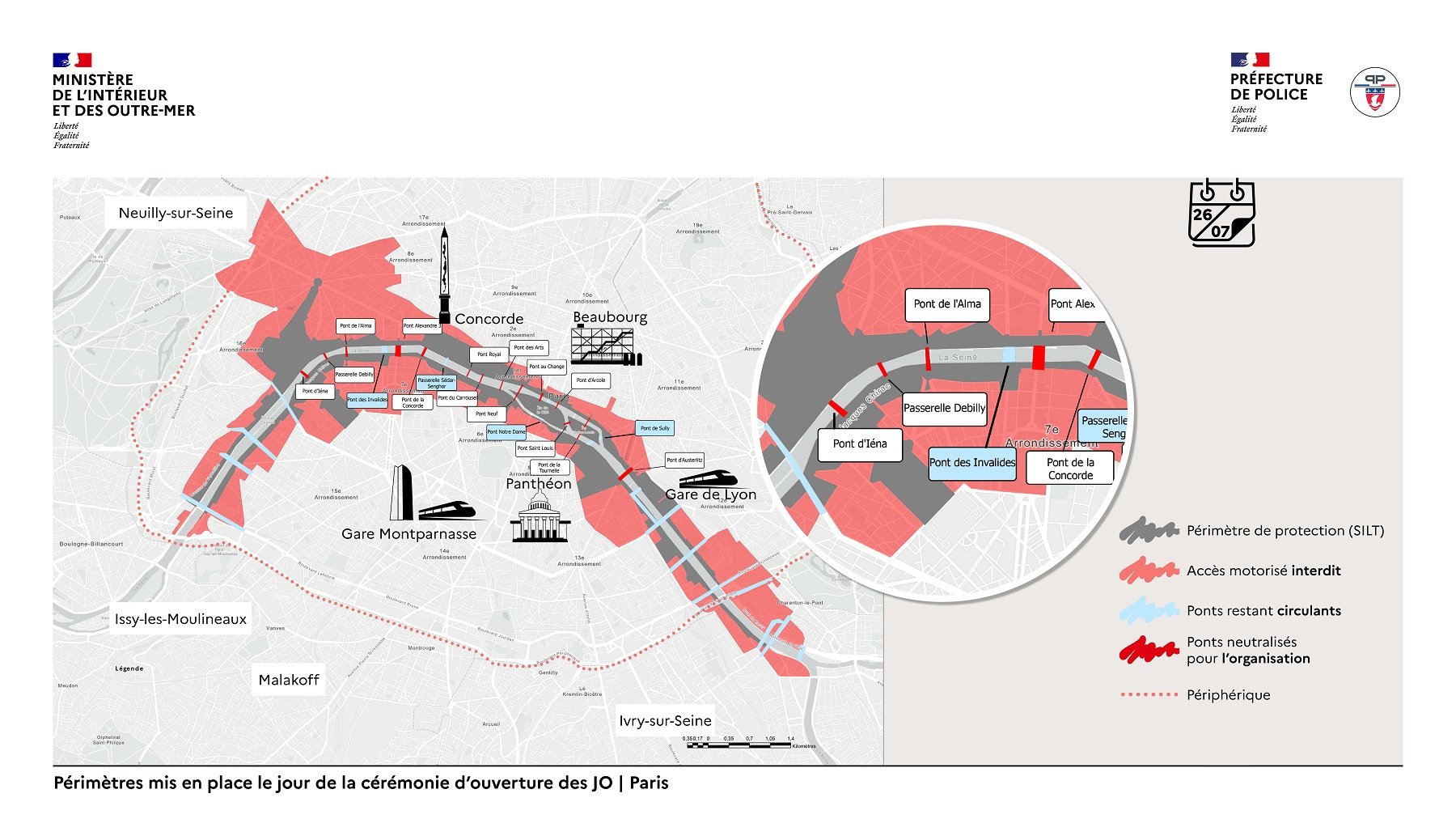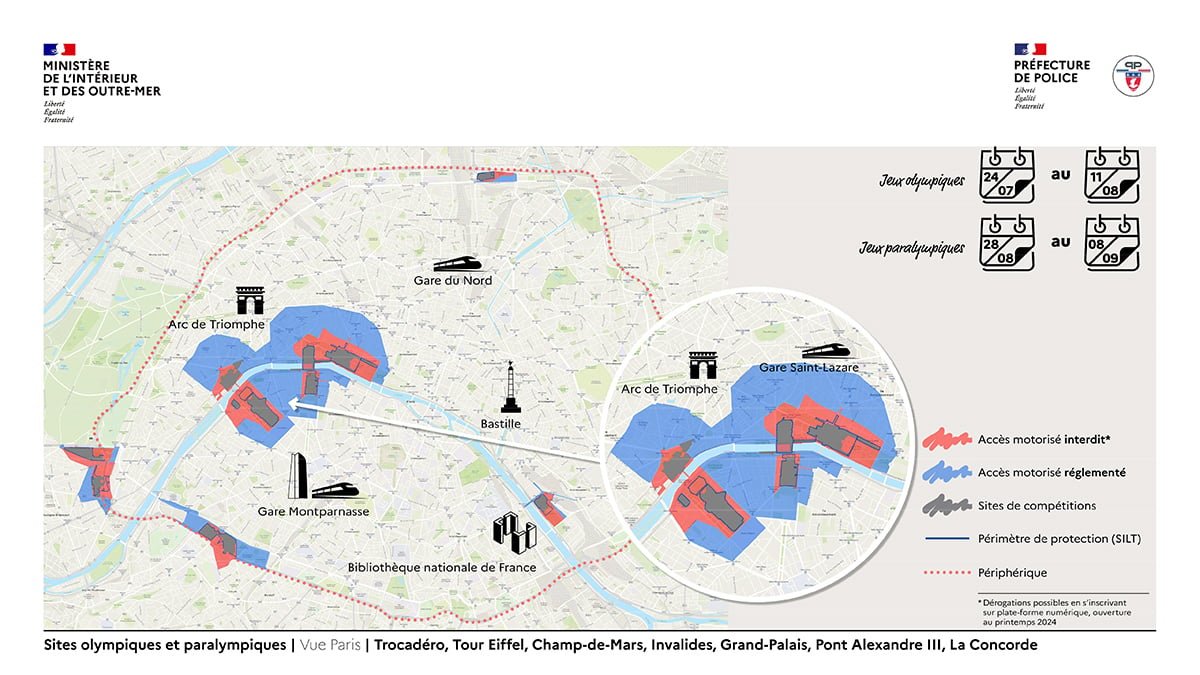Hellenic Olympic Committee chairman Spyros Capralos handed the torch to Paris Olympics chief organiser Tony Estanguet at the Panathenaic Stadium, where the first modern Olympics were held in 1896.
Estanguet in a speech said the goal for Paris was to organise “spectacular but also more responsible Games, which will contribute towards a more inclusive society.”
Organisers want to ensure “that the biggest event in the world plays an accelerating role in addressing the crucial questions of our time,” said Estanguet, a member of France’s Athens 2004 Olympics team who won gold in the slalom canoe event.
A duo of French champions, Beijing 2022 ice dance gold medallist Gabriella Papadakis and former swimmer Beatrice Hess, one of the most successful Paralympians in history, carried the flame during the final relay leg into the Panathenaic Stadium.
Nana Mouskouri, the 89-year-old Greek singer with a worldwide following, performed the anthems of France and Greece at the ceremony.
After spending the night at the French embassy in Athens, the flame on Saturday will begin its journey to France on board the 19th-century three-masted barque Belem.
On Sunday, the ship will pass from the Corinth Canal — a feat of 19th century engineering constructed with the contribution of French banks and engineers.
The Belem is set to reach Marseille — a city founded by ancient Greek colonists around 600 BCE — on May 8.
Over 1,000 vessels will accompany its approach to the harbour, local officials have said.
French swimmer Florent Manaudou will be the first torch bearer in Marseille. His sister Laure was the second torch bearer in ancient Olympia, where the flame was lit on April 16.
Ten thousand torchbearers will then carry the flame across 64 French territories.
It will travel through more than 450 towns and cities, and dozens of tourist attractions during its 12,000-kilometre (7,500-mile) journey through mainland France and overseas French territories in the Caribbean, Indian Ocean and Pacific.
On July 26 it will form the centrepiece of the Paris Olympics opening ceremony.
A French historical monument launched just weeks after the Athens 1896 Games were held, the Belem carried out trade journeys to Brazil, Guyana and the Caribbean for nearly two decades.
Hours before the handover ceremony, the flame passed from Marathon, the town where the classic 42-kilometre endurance race, a key Olympic event, sets off annually.
The torch harks back to the ancient Olympics when a sacred flame burned throughout the Games. The tradition was revived in 1936 for the Berlin Games.
During the 11-day relay on Greek soil, some 600 torchbearers carried the flame over a distance of over 5,000 kilometres (3,100 miles) through over 50 towns and cities.






 Please whitelist us to continue reading.
Please whitelist us to continue reading.
Member comments